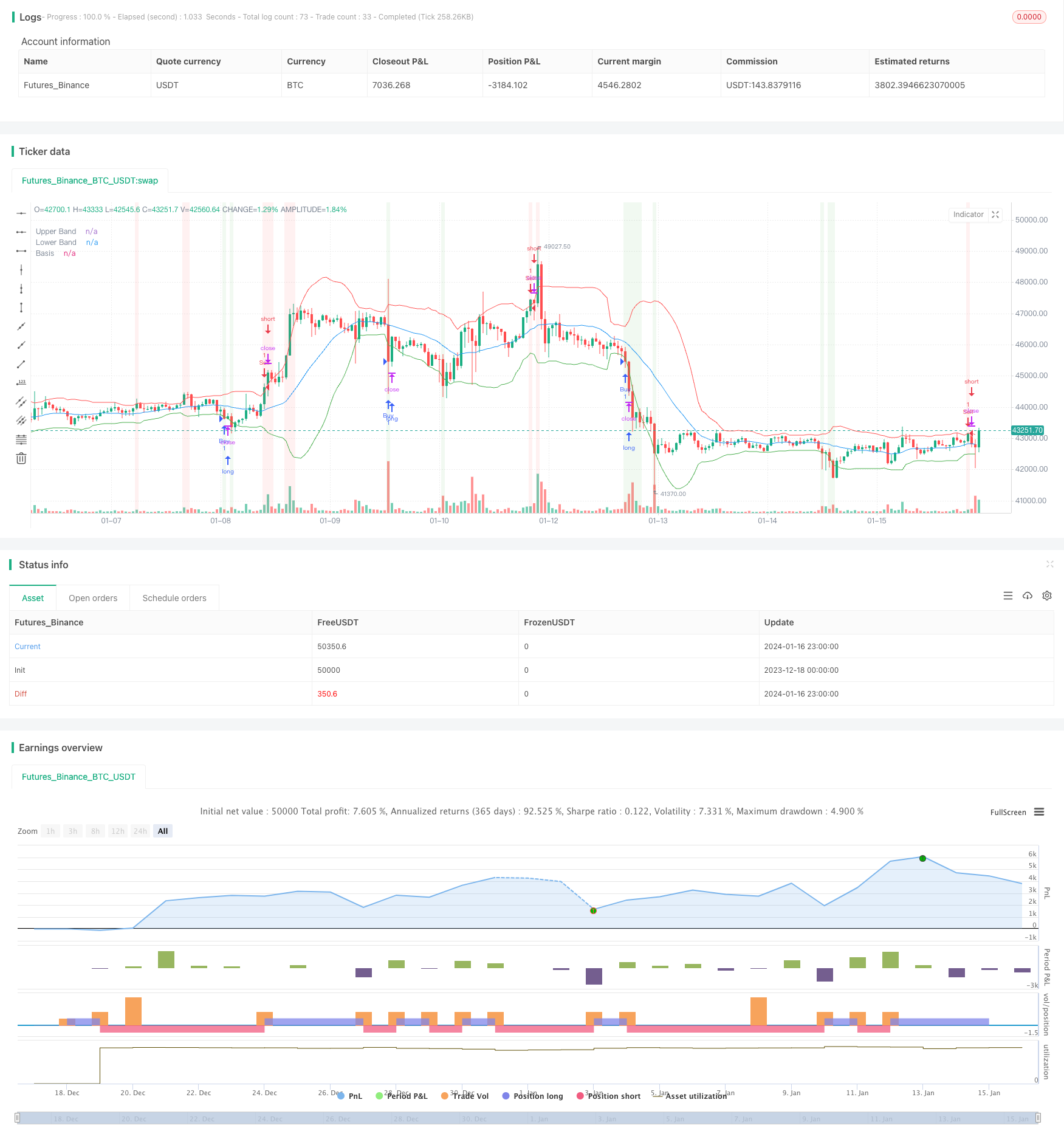
概述
该策略是基于布林带的突破策略。当价格突破布林带下轨时,做多;当价格突破布林带上轨时,做空。该策略利用了布林带能清晰描述价格波动范围的特点,通过捕捉价格突破来产生交易信号。
策略原理
该策略首先计算出20日的简单移动平均线作为中间基准线,然后计算出距离基准线上下两个标准差的距离作为布林带的上下轨。当收盘价格低于下轨时,认为行情超卖,产生买入信号;当收盘价格高于上轨时,认为行情超买,产生卖出信号。
优势分析
该策略具有以下优势:
利用布林带描述价格波动范围的特性,sellable波动的时候容易产生交易信号。
通过下轨突破做多,可以及时捕捉反弹机会。
通过上轨突破做空,可以及时捕捉下跌机会。
策略思路简单清晰,容易理解与实现。
可在多种市场中应用。
风险分析
该策略也存在一些风险:
当行情平静时,容易产生错误信号。
无法确定突破后的 Price 行情会继续向哪个方向发展。
无法确定突破信号带来的反转力度。
布林带参数设置不当也会对策略的效果产生影响。
需适当控制仓位规模。
可以通过优化参数,严格控制仓位,设置止损来控制这些风险。
优化策略
该策略还可以从以下几个方面进行优化:
优化布林带的参数,寻找最优的参数组合。
利用其他指标进行过滤,避免错误信号。例如量能指标,移动平均线等。
设置动态止损或移动止损。
根据市场情况,适当调整做多做空的条件。
进行回测与模拟交易,评估策略的效果。
总结
该策略整体来说是一种较为经典和常用的突破策略。它利用布林带指标对价格波动范围进行描述,通过捕捉其突破信号来寻找交易机会。该策略思路简单,易于实现,在实际中应用广泛。通过不断测试与优化,可以使其效果更好,风险更小。所以,该策略值得深入研究与应用。
策略源码
/*backtest
start: 2023-12-18 00:00:00
end: 2024-01-17 00:00:00
period: 1h
basePeriod: 15m
exchanges: [{"eid":"Futures_Binance","currency":"BTC_USDT"}]
*/
//@version=5
strategy("Bollinger Bands Strategy", shorttitle="BB Strategy", overlay=true)
// Input parameters
length = input(20, title="Bollinger Bands Length")
mult = input(2, title="Multiplier")
// Calculate Bollinger Bands
basis = ta.sma(close, length)
bb_upper = basis + mult * ta.stdev(close, length)
bb_lower = basis - mult * ta.stdev(close, length)
// Buy and sell conditions
buy_condition = close < bb_lower
sell_condition = close > bb_upper
// Execute trades
strategy.entry("Buy", strategy.long, when=buy_condition)
strategy.entry("Sell", strategy.short, when=sell_condition)
// Plotting Bollinger Bands on the chart
plot(bb_upper, color=color.red, title="Upper Band")
plot(bb_lower, color=color.green, title="Lower Band")
plot(basis, color=color.blue, title="Basis")
// Highlighting buy and sell signals on the chart
bgcolor(buy_condition ? color.new(color.green, 90) : na)
bgcolor(sell_condition ? color.new(color.red, 90) : na)